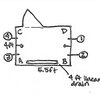High Pressure Water from Street
old_home_lover
10 years ago
Related Stories

DISASTER PREP & RECOVERYRemodeling After Water Damage: Tips From a Homeowner Who Did It
Learn the crucial steps and coping mechanisms that can help when flooding strikes your home
Full Story
HOUZZ TOURSHouzz Tour: Unplugging From High Tech in a Texas Farmhouse
This simply styled home gives an Austin family all the warmth of comfort food and all the amenities of modern times
Full Story
GARDENING AND LANDSCAPINGGarden Inspiration From New York's New High Line
See how to add some urban chic to your own stretch of green
Full Story
SUMMER GARDENING6 Water-Wise Perennials for Blazing High-Altitude Summers
Scorching weather and high elevations don't have to mean scraggly plantings. These blooms are as gorgeous as they are tough
Full Story
HOUSEKEEPINGProtect Your House From Winter Water Damage
Avoid costly repairs by learning to spot potential problem areas before water damage is done
Full Story
PLANTING IDEASGreat Garden Combo: 5 High-Intensity Plants for High-Intensity Sun
Blend bold foliage and flowers to create a powerful combination that will hold its own even in the harsh light of midsummer
Full Story
URBAN GARDENSCan-Do Design Ideas From 8 City Gardens
Look to urban rooftops, walkways and street patches for small-space gardening approaches that embrace what's nearby
Full Story
THE ART OF ARCHITECTUREWorld of Design: Trees Bring Nature to a High-Rise in Milan
Discover ‘the most beautiful and innovative skyscraper in the world’ — the foliage-filled Bosco Verticale — and tour one of its apartments
Full Story
GREEN BUILDINGHouzz Tour: High-End Luxury, Highest Ecofriendly Rating in California
Solar panels and energy savers let this posh LEED Platinum home produce as much energy as it consumes
Full Story
EDIBLE GARDENSLessons From an Edible Garden on a City Roof
Reincarnation of New York City rooftop pool proves edible landscaping is possible just about anywhere
Full Story



rwiegand
User
Related Professionals
Worcester Plumbers · Miller Place Plumbers · Athens Kitchen & Bathroom Remodelers · Beverly Hills Kitchen & Bathroom Remodelers · Champlin Kitchen & Bathroom Remodelers · Eagle Kitchen & Bathroom Remodelers · Glen Allen Kitchen & Bathroom Remodelers · Lynn Haven Kitchen & Bathroom Remodelers · Manassas Kitchen & Bathroom Remodelers · Oklahoma City Kitchen & Bathroom Remodelers · Rolling Hills Estates Kitchen & Bathroom Remodelers · Spanish Springs Kitchen & Bathroom Remodelers · York Kitchen & Bathroom Remodelers · Phillipsburg Kitchen & Bathroom Remodelers · Gibsonton Kitchen & Bathroom Remodelerskirkhall
User
kirkhall
User